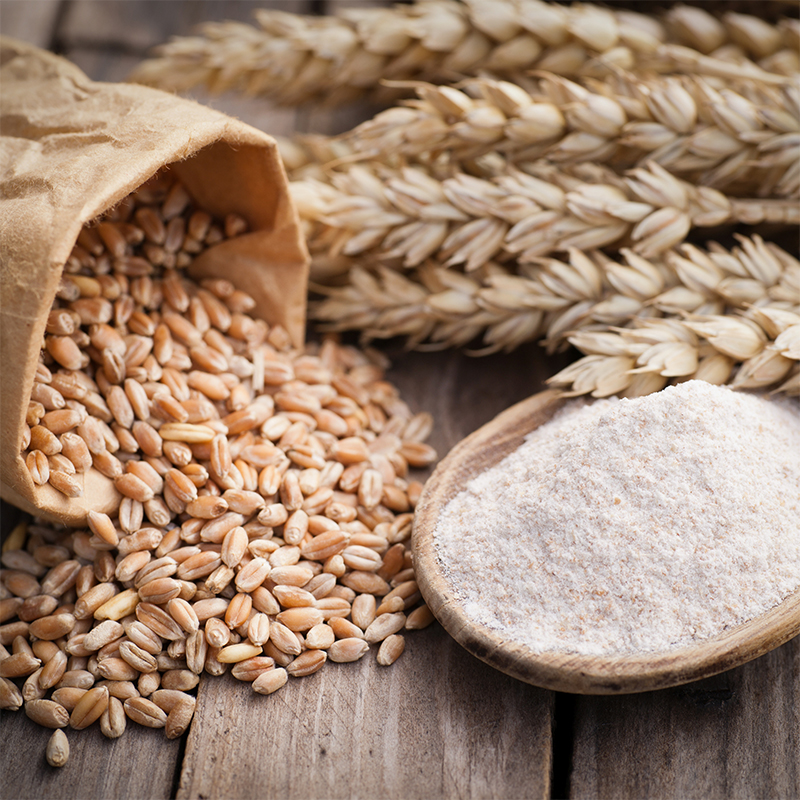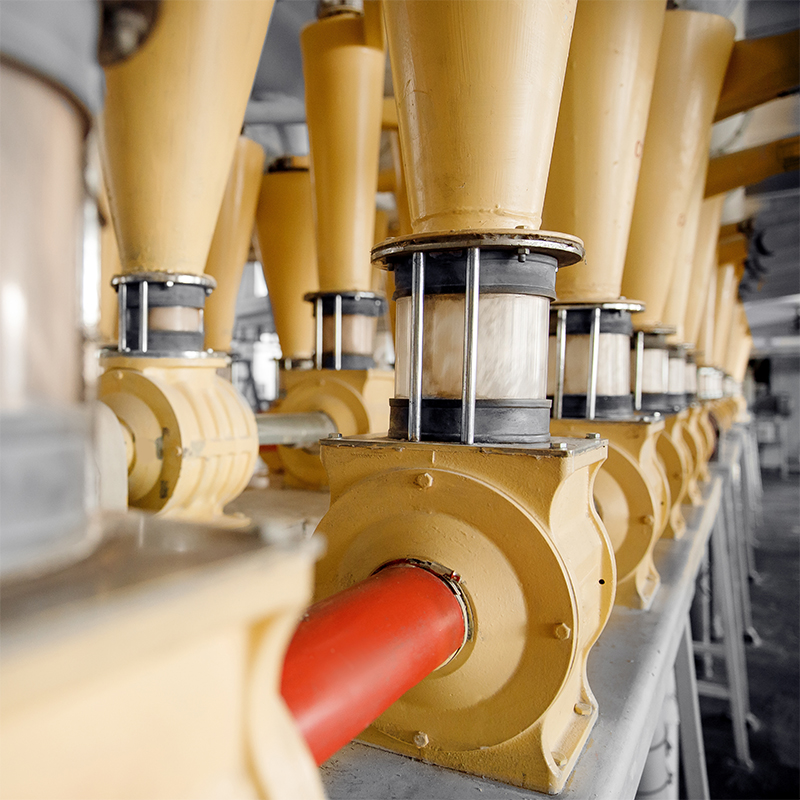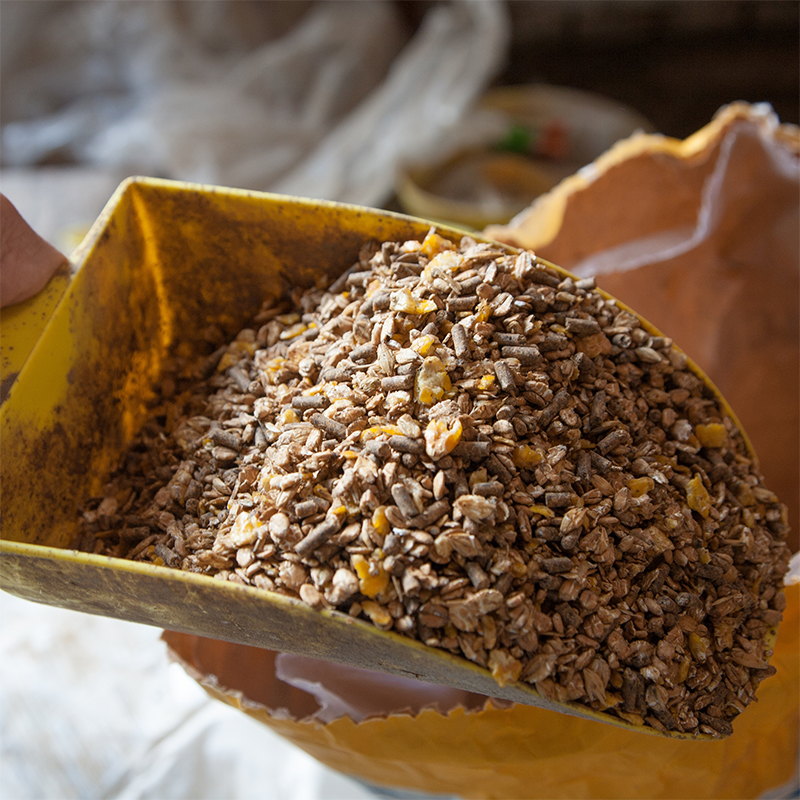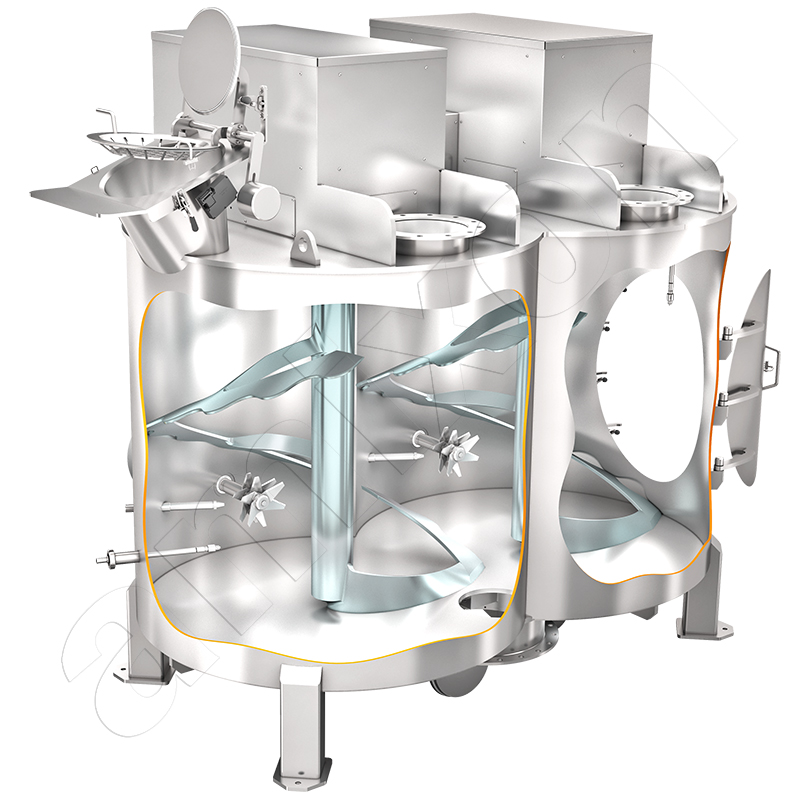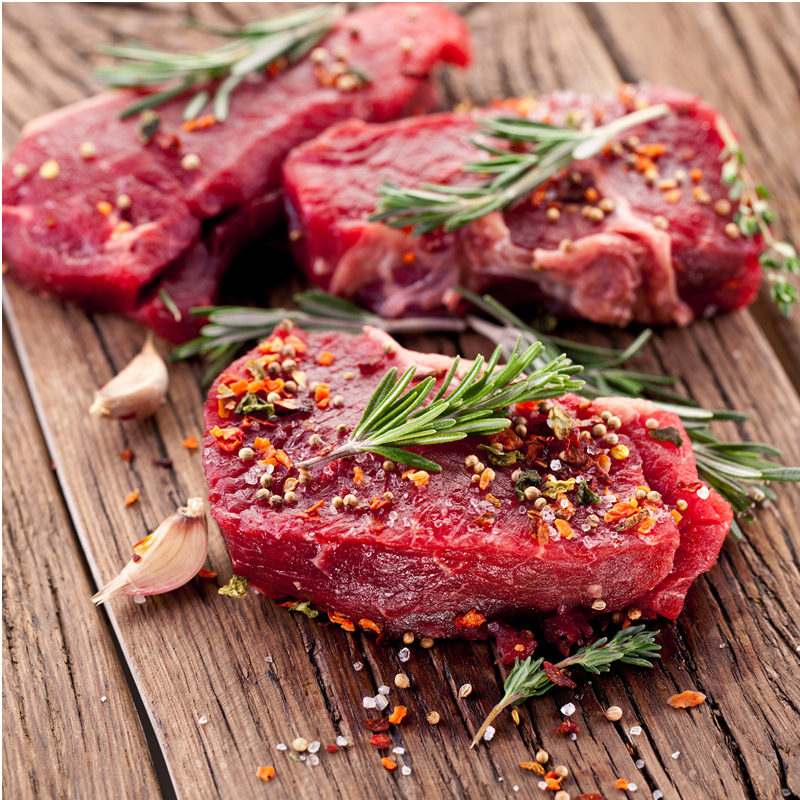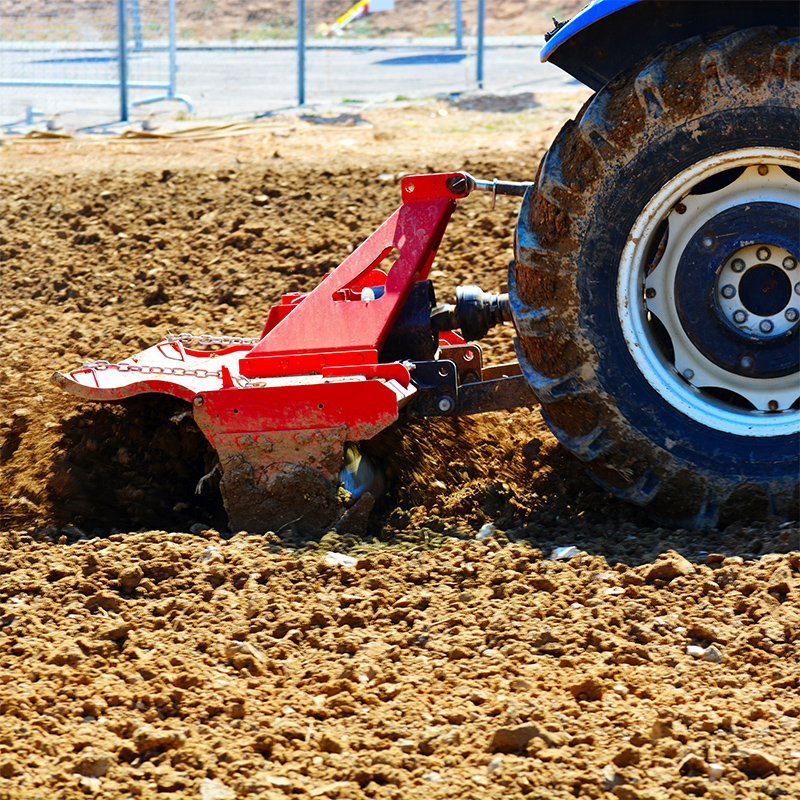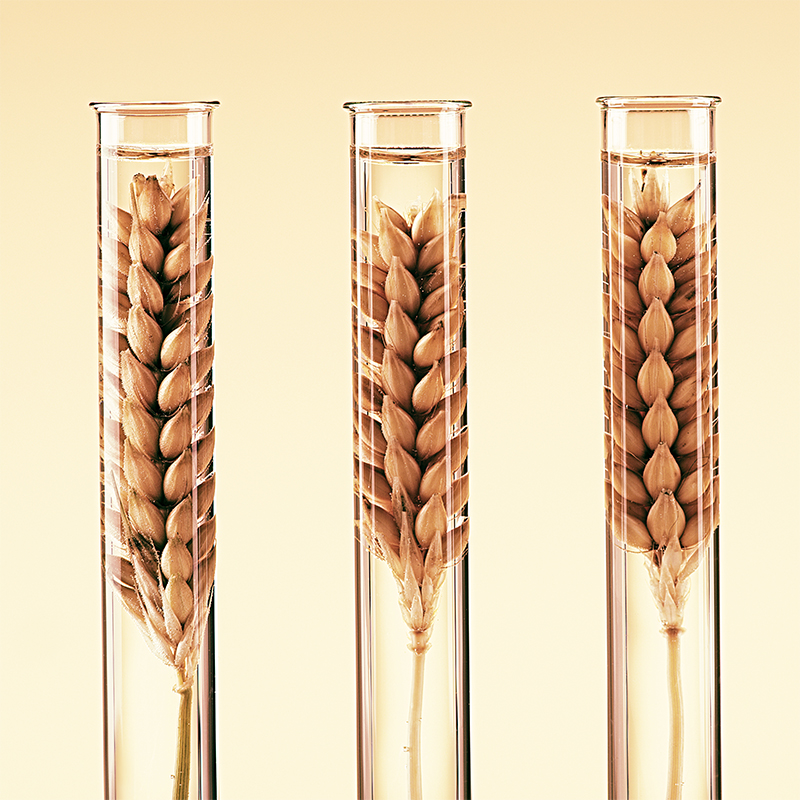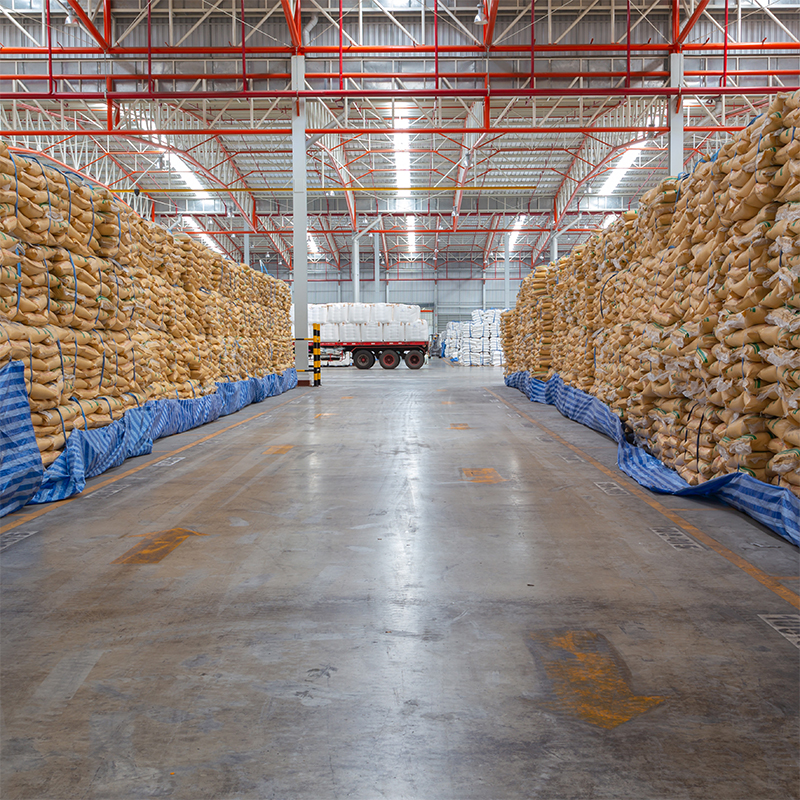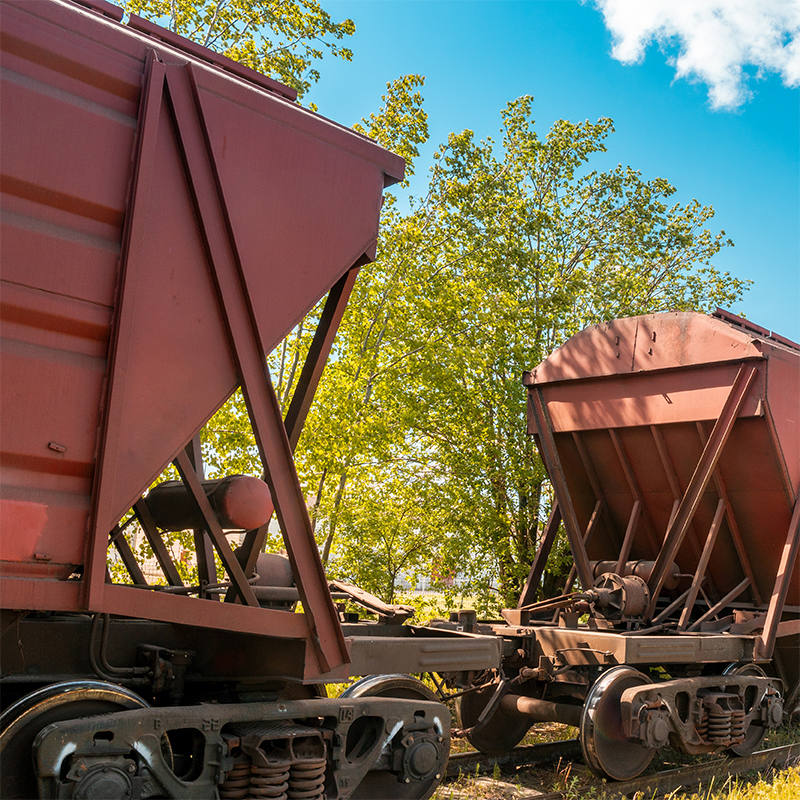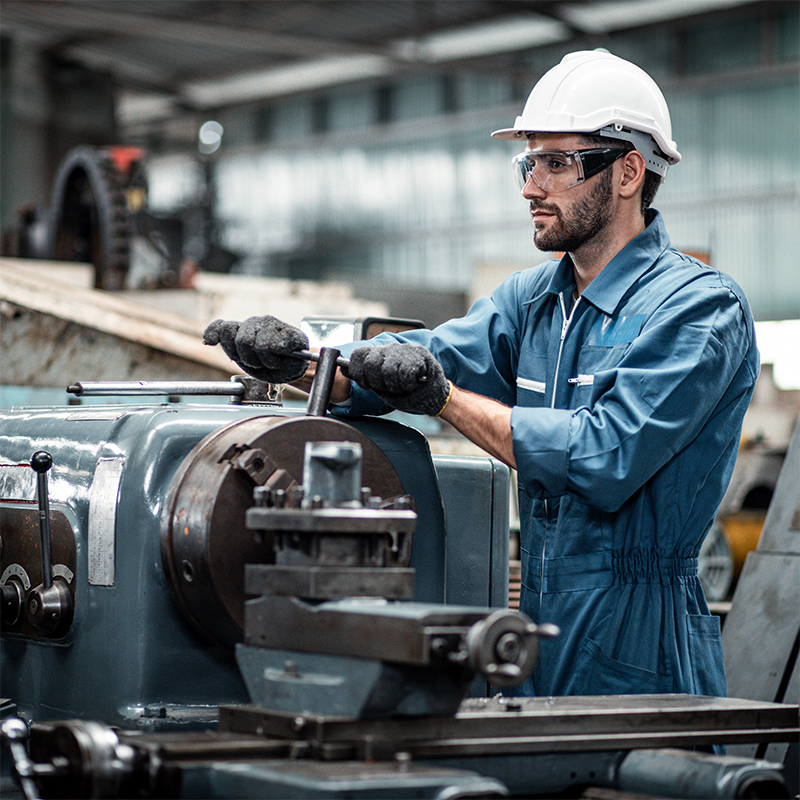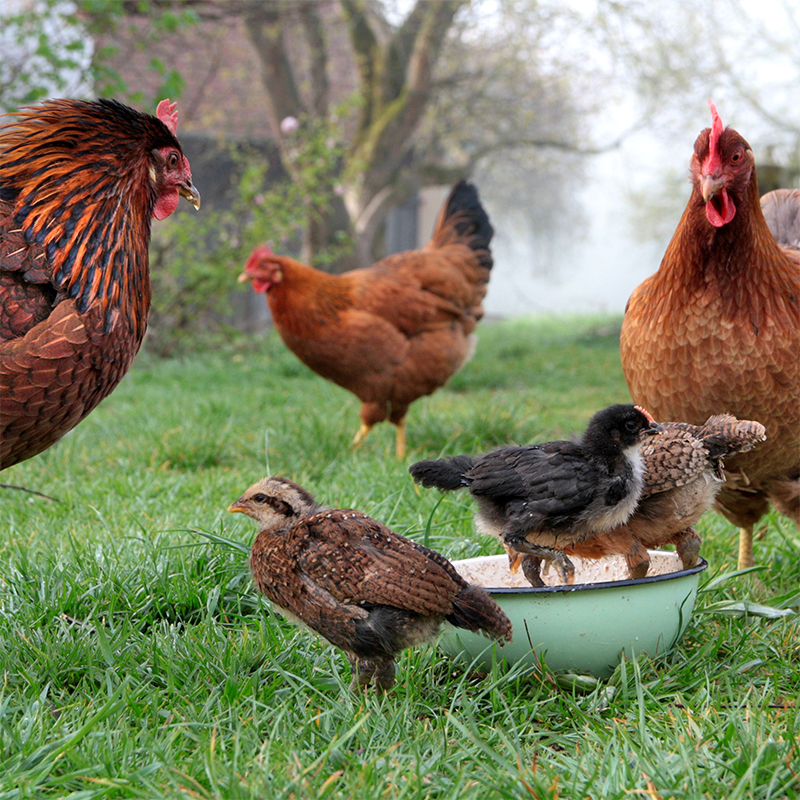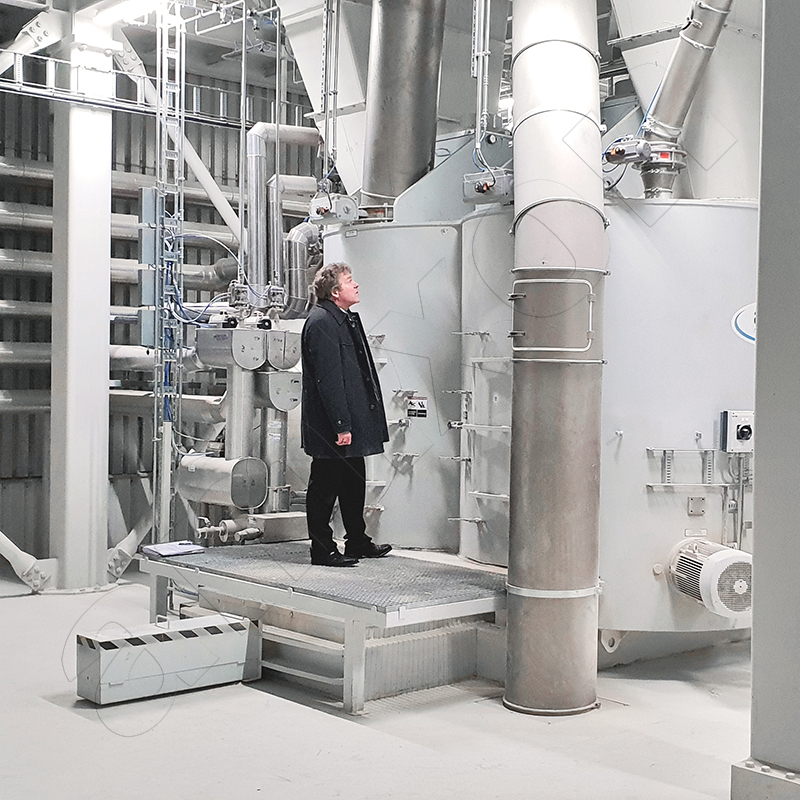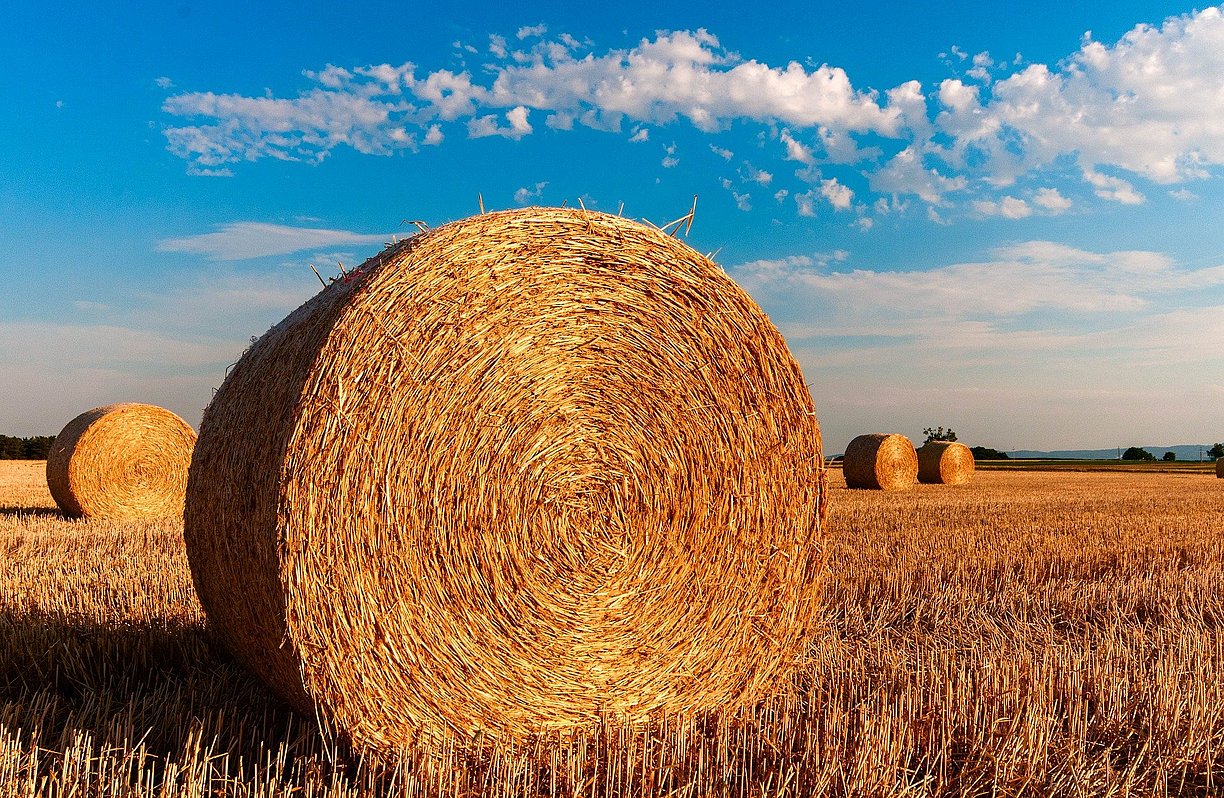
Statements of various owners of medium-sized animal feed businesses
amixon GmbH spoke to owners of medium-sized feed manufacturing companies about the challenges and advantages in their industry. How can these companies benefit from regionally available raw materials and modern technology? High-quality raw materials and efficient logistics improve product quality and availability, while modern machines optimize the mixing and milling of feed, which increases animal health and feed efficiency. Individual advice and analysis enable the customization of feed to specific needs, which ensures the long-term performance of the companies.
Would you like to find out more about amixon® mixing technology for animal feed? You can find more information here:
The optimal feed mixer for cattle, poultry, pigs and other animals.
What differences do you see in animal feed production/mineral processing or the production of pet food?
Food for farm animals is much more important as a commodity and also has correspondingly higher sales than, for example, pet food, because food for animal nutrition is the most important commodity for agriculture, as farmers usually derive most of their income from the sale of pork, beef, poultry, milk and eggs. Mineral mixtures do not consist of nutrients such as starch, sugar, fat and proteins (amino acids), but instead contain inorganic elements such as calcium, magnesium and phosphorus compounds, as well as the necessary trace elements. These include metal salts and compounds such as iron fumarate, copper sulphate and zinc oxide. Iodine and salt (NaCl) are also trace elements that are often not contained in optimal quantities in grains – the natural raw materials for feeds.
Are animal feeds produced in Germany different from those produced in Europe or the USA?
Basically, everyone is striving for the same optimal values. However, these are achieved through a different mix of components, because in southern, warmer countries, protein- and fat-rich raw material plants such as soy and peanuts thrive better than in cooler zones of the earth. Here in Central Europe, on the other hand, we have very good grain soils and sufficient rainfall. Our yields per hectare of grain are significantly higher than, for example, in the USA. Europe therefore exports more grain than the USA. Conversely, we import more protein components. The formula for fattening cattle fodder in the USA is "grain plus soy plus minerals", while for us it is more like "grain plus soy plus rapeseed plus amino acids plus mineralisation". In this respect, there are indeed regional differences.
High-quality raw materials are needed for high-quality animal feeds. How do animal feed producers solve this challenge?
Due to the high performance of modern combine harvesters, the harvesting time has been reduced from several weeks to a few days. Even rainy summers have at least some, if only a few sunny days, so that grains can usually be harvested dry. Dry storage benefits the quality of the deliveries from the immediate vicinity.
High-performance wholesalers, brokers and importers often specialise in a few core components and help to avoid bottlenecks. The availability of good qualities is therefore not a big problem in most years.
The problem for everyone is rather the most favourable time to complete the purchase, because prices are often highly volatile.
On the subject of quality, it should also be mentioned that the grain is cleaned immediately after delivery by wind sifting, as well as heavy and large part selection. A few companies use the particularly effective drum screen cleaning, with which the grain can be freed from unwanted adhesions such as sand, soil and especially microorganisms.
Almost exclusively physical processes are used for animal feed production: separation based on particle size differences or density differences, cleaning, mechanical crushing, mixing, pelletising and, if necessary, impregnation. Are fermentation processes ruled out due to excessive dwell times and costs?
No, not directly. Dry processing is preferred over fermentation mainly because of better storability. In addition, many farmers process their own grain themselves. This is much easier in the dry state, so that fermentation processes for animal feed preparation are out of the question.
Chilled grain can be stored in the long term with a moisture content of up to maximally 13 percent. Wetter feed and feed components spoil very quickly. This process can be slowed down (within limits) with the help of propionic acid.
Do particle shape and size also play a role in animal feed quality?
Of course! It has been scientifically proven that the way in which the raw materials are crushed significantly influences the digestibility and thus the health of the animals. If particles are crushed, their surface area increases and the digestive and metabolic mechanisms benefit from that. However, fine portions in the grist are undesirable, as these can lead to gastritis and ulcers in pigs.
While a classic hammer mill effectively crushes the grain, it rounds the fracture edges of the particles. If, on the other hand, the crushing is done with a double crushing roller mill, the fracture and shear edges are retained in the crushed mixed feed. What's more, the dust content is significantly reduced. In this respect, the process technology of crushing contributes to a healthy gastrointestinal tract of farm animals. A double crushing roller mill also provides a particularly uniform grain size distribution, which is particularly important for poultry feeding. As you can see, even the type of raw material crushing influences the animal feed quality.
To what extent does the mixer contribute to animal feed quality?
We expect mixers to work gently, too, so that they do not round the fracture edges of the particles and do not produce any additional fines, because this contributes directly to the health of the farm animals. It is also crucial that the mix that leaves the mixer is ideally homogeneous and has not been heated.
Since we run many different mixing orders one after the other, the residue-free emptying of the mixer and that of the system are also an important quality aspect. 4.5-tonne batches must be completely emptied to at least 1000 g in a few seconds. This kilo then corresponds to 0.22 parts per thousand residue and means that the batch was mixed practically without carry-over.
In addition, energy consumption is an important quality feature for us. The more effectively the mixer works, the shorter the mixing time.
Learn more about the use of amixon® mixers in feed production here!
What route will animal feed companies take in the future? Do you see any trends?
Nutrition is the most urgent basic human need. In the future, animal feed companies will focus even more on sustainability.
The structural change in the German agricultural industry will also have a lasting impact on the animal feed industry: in the future, it won't just be about more output, but also about higher quality.
In addition, effects of the animal welfare debate are to be expected. Animal feeds can make a significant contribution to animal welfare. They can also reduce the environmental impact of animal husbandry and contribute to nature conservation. There are excellent ways to reduce nitrogen (N) and phosphorus (P) excretions via the feeding. This is good for the farmland and protects our drinking water.
In the future, consumers will also expect GMO-free raw materials from us, as well as fully degradable pesticides and mineral fertilisers.
What changes are you observing in the structure of your agricultural customers?
Overall, the number of farms – and also of fattening farms – is declining. The trend towards large farms (+ 35 % between 2010 and 2019) continues unabated, but the number of small and medium-sized fattening farms is decreasing.
Although the size of large farms continues to grow, they cannot fully compensate for the trend. We are therefore recording a slight negative trend in German animal populations overall.
The nutrient content of the raw materials can no doubt vary with this range of raw material sources. However, knowing them exactly is surely a prerequisite for the optimal composition of the animal feed mixture, isn't it?
That's right. Mixed feed manufacturers usually use near-infrared spectroscopy systems (NIRS) for this purpose. Infrared light in the frequency range from 800 to 2500 nm is shone through the nutrient sample. The frequency range of the absorbed and reflected radiation is measured. NIRS is an established analytical method for the ingredients of crops, dry matter masses, crude protein, crude fibre, crude fat and starch. Even a possible pathogenic infestation of the starting materials for the animal feed can be detected with a high degree of certainty.
At critical times, a mixed feed manufacturer records the current prices and availability of all protein and energy sources several times a day and stores the data. A powerful optimisation program iteratively calculates the mixing result from these thousands of data sets and makes suggestions on how an animal feed recipe should be optimally composed. Purchase price, availability and the needs of the farm animals are taken into account as boundary conditions.
How long is the shelf life of the animal feeds after production? Or should they be fed immediately?
Normally, the mixed feeds are fed within a few days, so oxidation does not play a role. 99 % of customers receive their goods by silo truck. The best-before date is 3 months. As a rule, the goods are consumed within a few days.
How important are analytics and consulting for farmers and animal feed manufacturers?
Analytics and consulting play an important role for us, because only in this way can the feed be optimally adapted to the individual growth phases and farms. The quality of the feed can be optimally ensured and further optimised through frequent analyses and checks. In addition, individual mixtures can be created for each farm on request. Different animal breeds, for example, can place different demands on the animal feed. In practice, the farmer expresses his individual wishes to his advisor and then receives the optimal animal feed recipe for his farm. Many farms use by-products such as biscuit waste, bread and chocolate in addition to the farm's own grain. The respective quantities and ingredients are then also analysed by us in order to be able to recommend the appropriate supplementary animal feed.
Many hundreds of tonnes of raw materials are delivered to animal feed manufacturers every day. Equally large quantities of animal feeds are transported away. No doubt the appropriate logistics for this are challenging …
Our optimally adapted logistics are a prerequisite for performance and cost-effectiveness. This topic is constantly being put to the test.
Most of the raw materials are delivered by third-party service providers (freight forwarders); some of the grain comes from local farmers. The rest is purchased.
We deliver ready-made feeds and supplementary feeds to farms with our own vehicles and local drivers, who also perform informal secondary tasks and thus update and maintain the exchange of information with the farmer. If animal feed sales decline depending on the season, our own drivers are also used to fetch raw materials.
What wishes or advice do you have for apparatus manufacturers, farmers or politicians?
We would like the lowest possible energy consumption and a long service life of the systems from the machine and apparatus manufacturers. Many hundreds of thousands of tonnes of mixed feed are produced every year. That is why we attach great importance to wear protection.
Important spare parts must be available at fair prices in the shortest possible time. These include the right gearboxes, motors, timing belts, roller bearings, etc. In addition, we expect the apparatus manufacturer to carry out repair work – if necessary – even on Sundays and public holidays.
The better our in-house fitters are trained by the machine manufacturers in terms of value retention and repair, the safer and better they can carry out the important maintenance and repair work themselves.
What would you like to see from your customers, the farmers?
Feed quality always pays off in the long term. It ensures good animal health and consistently good performance of the animals.
Our daily production process would be easier to plan and more cost-effective if customers were to place their orders two days before the delivery date. The fulfilment of this wish would be advantageous for both sides.
Legal constraints and requirements for the husbandry conditions of farm animals must be uniformly regulated and checked in Europe. Market access must be prohibited for food not produced according to European standards. These two points are important for fair competition, because otherwise we will lose animal breeding and production in Germany.
The consequence would be that we would have neither control nor influence over how our food is produced. For example? The keeping of battery hens has been banned in Germany for eleven years, but is still practiced in some EU countries today because it is much more cost-effective. This is completely unacceptable within Europe.
Planning security is also important for farmers. Therefore, specifications for the required standards for the design of the stables must remain permissible after the legal entry into force at least for the depreciation period.
Thank you very much for your statements, which have enriched our view of this important industry by many facets.
© Copyright by amixon GmbH

